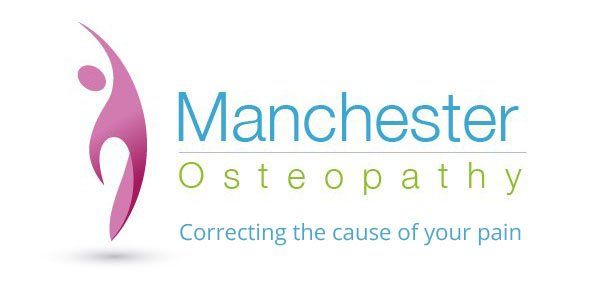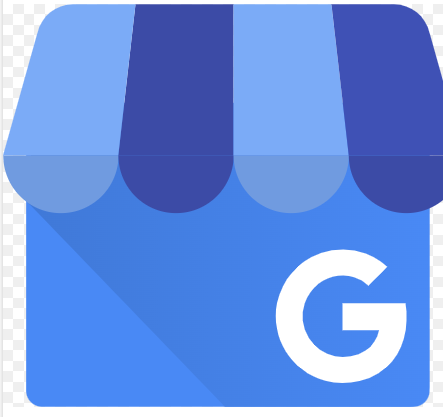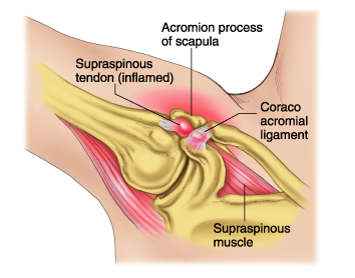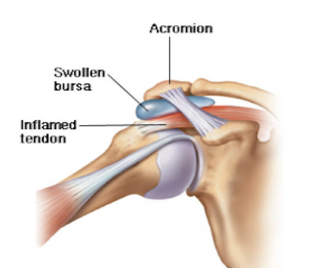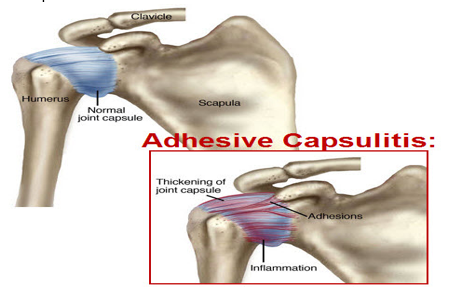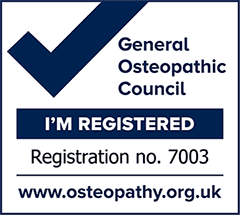Treating the Cause of Your
Shoulder Injury
A crucial part of our service as Osteopaths is to diagnose the complaint and inform our clients what will aid and hinder their injury from healing. This is especially important with shoulder injuries because we carry out most of our everyday activities with our arms, and hands. However, it isn’t always overuse of the shoulders that can cause problems. Many shoulder injuries come from poor desk-bound postures and even poor sleeping positions.
Cervical spine joint referral pain
Poor posture also increases the likelihood of the neck's facet joints becoming restricted/inflamed, and the joint capsule becoming stretched. These conditions can cause the neck joints to refer to pain into the shoulder and head. The diagram below illustrates the common referral pattern from the 7 facet joints on both sides of the neck. The C is Cervical (bones in the neck) C1 is the neck's first vertebrae that articulates with the skull. C7 is the lowest vertebrae in the neck, this section articulates a section of the Thoracic spine, the area of the spine, which attaches to the ribs.
Rounded shoulders
Most of our tasks require the arms to be in front of the body. This can result in a common fixed posture and rounded shoulders. Rounded shoulders cause the joints of the spine, and shoulder to get pulled out of alignment in a forward direction causing strain in the muscles that attach to the shoulder blade. This posture will also cause restrictions in the facet joints on either side neck (described above) and the upper thoracic spine.
Rounded shoulders and a forward head posture commonly cause all complaints below.
● Rotator cuff strain: The rotator cuff muscles are small deep muscles in the shoulder. Their primary role is to stabilize the Glenohumeral joint the big ball and socket joint in the shoulder. A rounded shoulder posture can contribute to rotator cuff strain injuries. Other common causes are falling onto an outstretched hand, repetitive tasks especially working with the arms & hands raised e.g. hairdresser, painter and decorator, and repetitive lifting. Pain can be felt around the shoulder joint or the upper arm. Distinctive symptoms are the pain can be worse at night, especially when lying on the affected shoulder.
● Shoulder impingement:
Another rotator cuff injury specific to the Supraspinatus muscle. Pain is typically felt when bringing the arm to the side or in front of the body. As these movements occur, the inflamed supraspinatus gets pinched between the humeral head (part of the bone in the upper arm) and the acromion (part of the Scapula), resulting in a sharp pain localised to the site of the injury.
● Bursitis: Bursa is fluid-filled sacks that cushion tendons as they cross prominent areas of bone. Bursitis is inflammation of the bursa. Symptom characteristics are that the painful area is red, inflamed, and particularly sensitive to pressure.
● Frozen shoulder: This condition affects the joint capsule, and other connective tissues that cross the largest joint in the shoulder. The capsule initially becomes inflamed and this causes the tissues to thicken, and contract, resulting in adhesions forming in the structures. Chronic pain, and very limited range of movement are the dominant symptoms experienced with this condition.
Business hours
Monday: 12:00-19:00
Tuesday: 9:00-18:00
Wednesday: 9:00-13:00
Thursday: 12:00-19:00
Friday: 9:00-17:00
Saturday: 9:00-12:00
Sunday: closed
Fees
Initial consultation
£45
Follow up £45
OAPs and students discount:
Initial consultation £40
Follow up £40
All major UK cards accepted.

Phone:
0161 641 4001
07976 254 439
We can only accept medical insurance policies that require the policy holder to pay for treatment, after each treatment, and the fee is claimed back afterwards.
